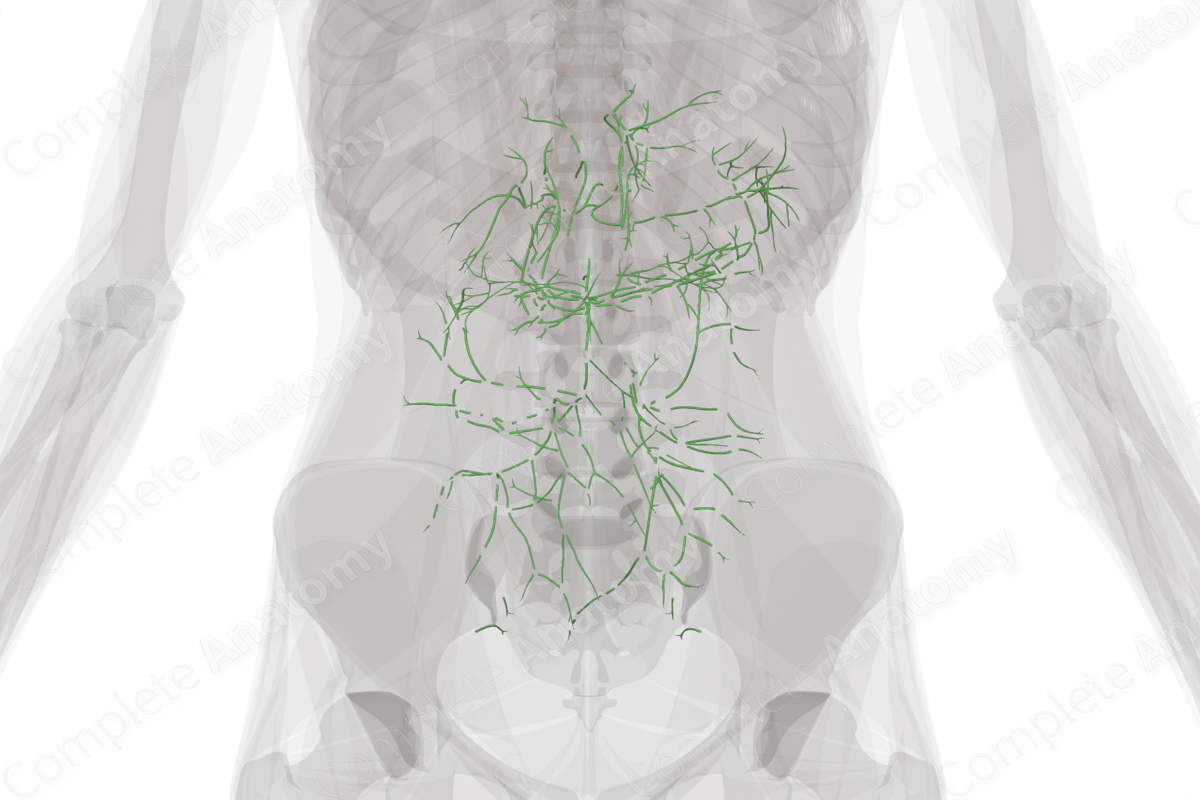
Visceral Abdominal Lymph Vessels
Description
The visceral abdominal lymph nodes are found adjacent to the arterial branches originating from the abdominal aorta. They receive lymph from various groups of nodes of the gastrointestinal tract and accessory organs, including gastroomental, pyloric, pancreatic, splenic, pancreaticoduodenal, cystic, ileocolic, prececal, retrocecal, colic, sigmoid, and superior anorectal lymph nodes.
Specifically, lymph from the small intestine is collected by lymph nodes in the mesentery called the juxtaintestinal mesenteric lymph nodes and flows via the intermediate mesenteric lymph nodes to the superior mesenteric lymph nodes.
The superior mesenteric lymph nodes also collect lymph from the large intestine via the paracolic, epicolic, right colic, ileocolic, middle colic and prececal lymph nodes.
Also draining the large intestine is the inferior mesenteric lymph nodes that collect lymph from the descending and sigmoid parts of the colon via the left colic, superior anorectal and sigmoid lymph nodes.
Lymph from the stomach, liver, pancreas, spleen, and diaphragm converges on the celiac lymph nodes around the celiac artery, which joins with the lymph from the superior mesenteric lymph nodes to form the intestinal trunk, which empties lymph into the cisterna chyli. Lymph from the superior surface of the diaphragm also occasionally travels to the xiphoid lymph nodes.
The renal lymph nodes comprise a small group of lymph nodes located proximal to the kidneys. These nodes drain the kidney of lymph, transporting it to the cisterna chyli via the intestinal trunk and lateral aortic lymph node.
From the cisterna chyli, lymph is transported up the thoracic duct, and soon after being joined by the jugular lymph trunk from the head and neck, empties into the venous system at the junction of the left internal jugular vein and the left subclavian vein.
Related parts of the anatomy




